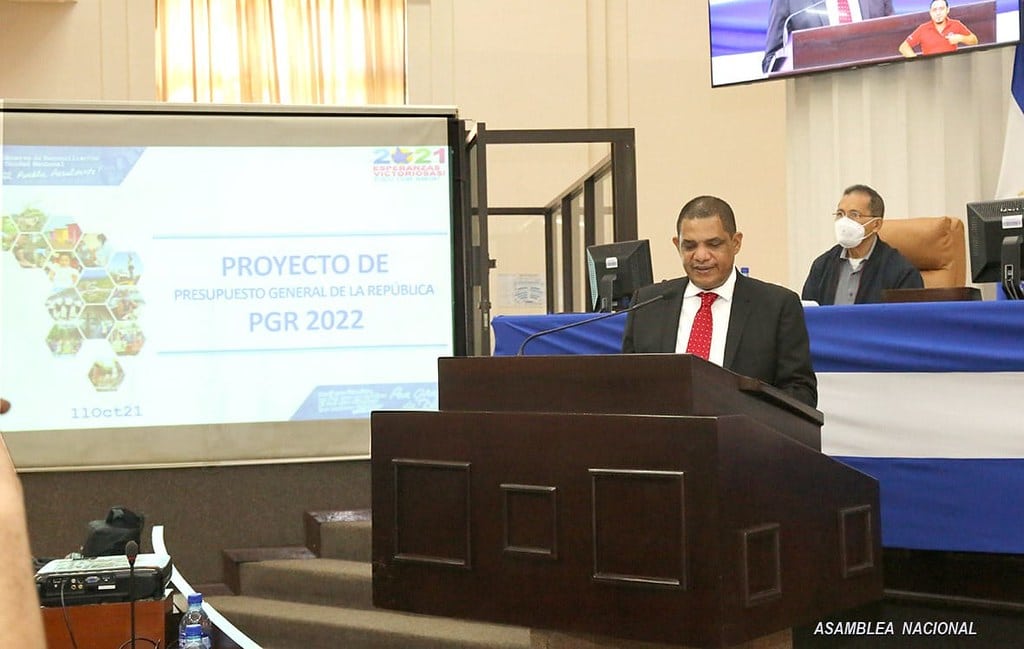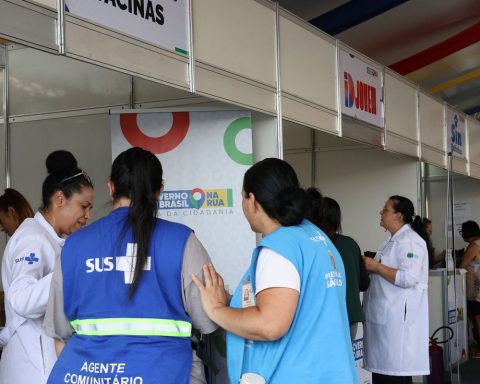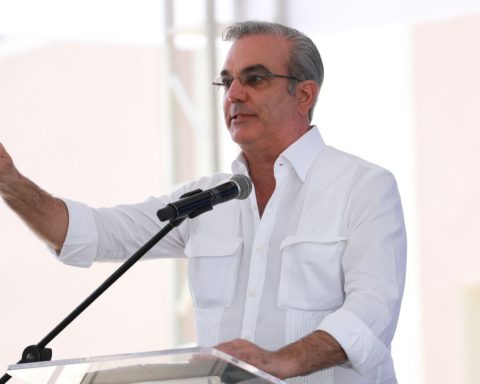The Minister of Finance and Public Credit, Iván Acosta, presented before the National Assembly the draft law of the General Budget of the Republic for the year 2022, which reflects income of 91,542.5 million córdobas, and total expenses of 91,802.2 million, resulting in a deficit before donations of 259.7 million, for which Acosta called it “a balanced budget.”
The draft was presented on October 15, as mandated by the Financial Administration and Budgetary Regime Law, but until now, the regime had refrained from presenting it to parliament for your approval. According to the minister, this Budget “ensures the social and economic stability” of the country.
In addition to incorporating a 3.0% salary adjustment, (less than 5.0% of previous years), in the 2022 budget, it is also contemplated “to reduce the labor liability by C $ 200.0 million, mainly for the Ministry of Health”, (Minsa). One of the ways to “reduce labor liabilities” is by laying off staff.
Acosta said that the Budget project estimates a 6.0% growth for this year, “based on the calculations of the Central Bank of Nicaragua”, but that the finance technicians predict that it will be higher than 8.0%. The most recent projection The Economist Intelligence Unit estimates growth at 8.5% for this year.
Although the calculations of various international organizations indicate that the Nicaraguan economy will grow at a rate of 2% (and less) in the following years, Minister Acosta indicated that Nicaraguan GDP will grow 3.2% in 2022, “with average growth in the medium term , 3.7% ”.
Two different photos
The budget presented gives to celebrate significant growth, or to predict that next year’s budget exercise will be slightly higher than 2021, depending on what you decide to compare.
From the point of view chosen by the Executive, the 91,542.5 million cordobas based on income, exceed the approved budget for 2021 by 13.5% (10,871.3 million), while the total expenses, calculated at 91,802.2 million cordobas, They are 10,273.4 million (12.6%) higher than the amount originally budgeted for the entire current year.
The picture that the numbers paint is very different, when the amounts proposed for 2022 are compared with the real budget year of 2021, that is, with the reformed budget, which is the one in operation.
In this case, the 91,542.5 million córdobas of income expected for 2022, barely exceed by 2.1% (1860.1 million) the 89 682.4 million that are being executed this year, while the 91 802.2 million proposed to be spent in 2022, It is lower by 14,042.6 million córdobas (13.3%), to the 105,844.8 million expected to be spent in the entire year that is underway.
The document shows that, in 2022, tax collection will grow by 9801.1 million córdobas, (13.1% if compared to the budget approved a year ago, which was a projection), and only 1,444.5 million (1.7%), when compared to the reformed budget, which is the one in use.
We count on your generosity!
The regime expects to receive disbursements for 12 014.0 million in 2022 (46.4% lower than those of this year), and obtain donations for 1541.8 million, which would turn the deficit into “a small surplus,” said the minister.
The more than 12 billion of net external financing originates in concessional loans from projects in execution, which have to CABEI as the main contributor, with 6065.3 million; the IDB, with 2,920.1 million; the World Bank, with 2025.4 million, the International Monetary Fund (IMF), with 316.8 million, in addition to Korea, IFAD, OPEC and KFW, with more than 675 million.
In the case of disbursements, these come mainly from the World Bank (WB), the European Union, the Central American Bank for Economic Integration (CABEI), Taiwan, and the World Food Program, as well as other smaller amounts from Kuwait and USA; in addition to UNICEF, FAO, PAHO, and the World Rehabilitation Fund.
The budget presented to the deputies, expects that the regime will be able to place 3,587 million córdobas in bonds (100 million dollars), and that C $ 1,076.3 million will be paid to the INSS (the quota of USD10 million corresponding to 2022, plus two advance installments); and that C $ 537.7 million will be amortized in concept of bank bonds and capitalization bonds.
In total, the Central Government debt service is estimated at 635.2 million dollars, of which USD325.7 million are internal debt, and the remaining USD309.5 million are external debt.
This budget also cuts the constitutional percentage of 10% for municipalities, and re-establishes it at 3,396.1 million (4%), which ensures that the central administration will be able to dispose of the remaining almost 5,100 million, to distribute them at will, rewarding or punishing to the mayors.
Among the ministries and institutions, the Minsa is the one that receives the largest increase in its departure, with 2896.1 million additional córdobas. It is followed by Transportation and Infrastructure (1065.0 million); the Supreme Electoral Council (714.9); Treasury (688.0); Universities (616.4); Education (514.1); the Court (410.9); Energy and Mines (309.9); Army (335.1) and Police (287.6).
After the presentation, the sanctioned president of the National Assembly, Gustavo Porras, sent the draft to the Economy and Budget Commission, chaired by Wálmaro Gutiérrez.


















